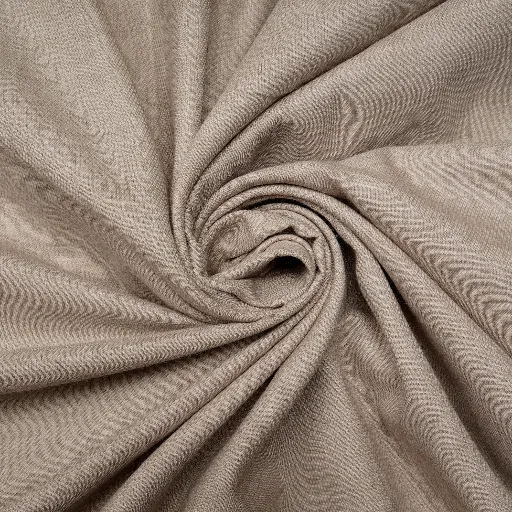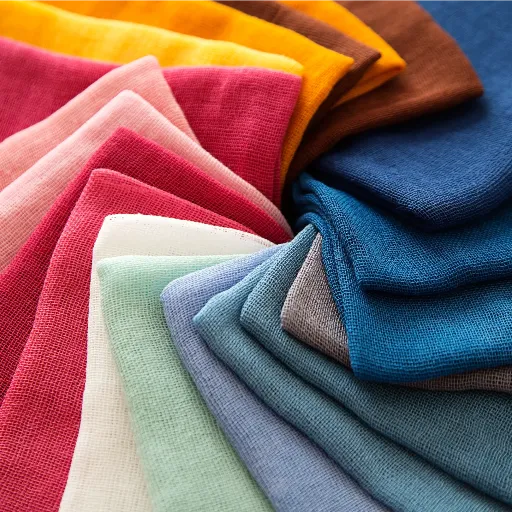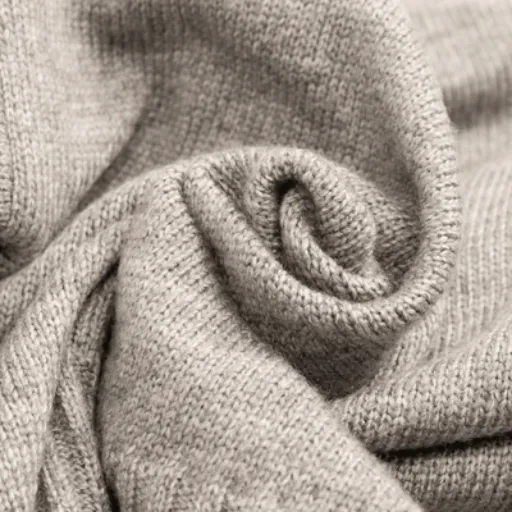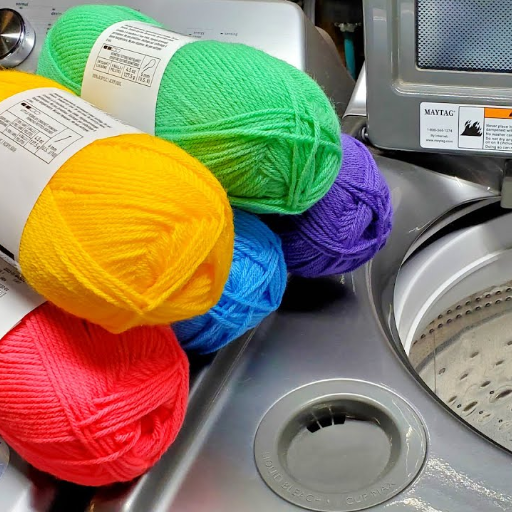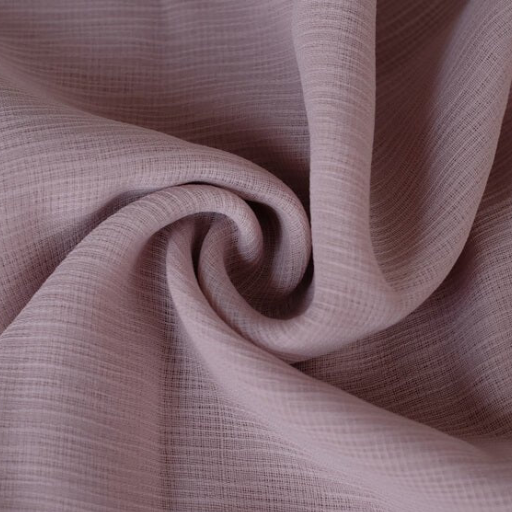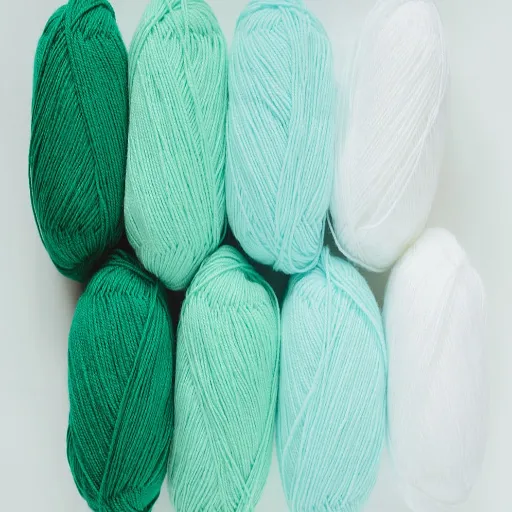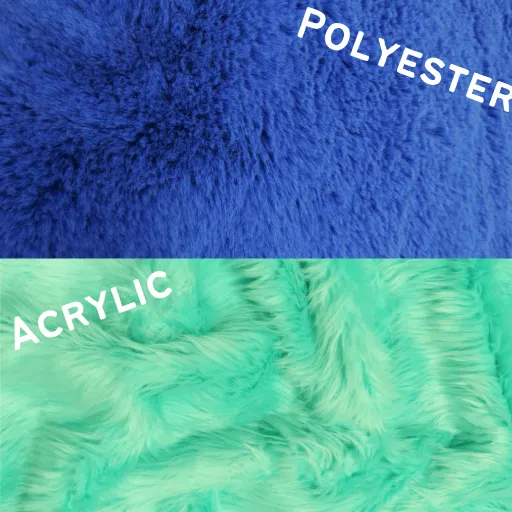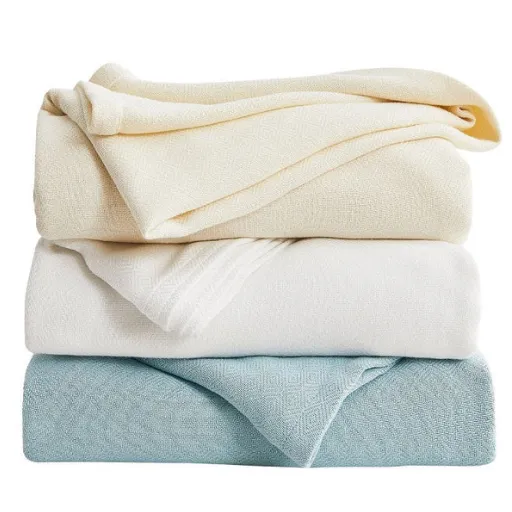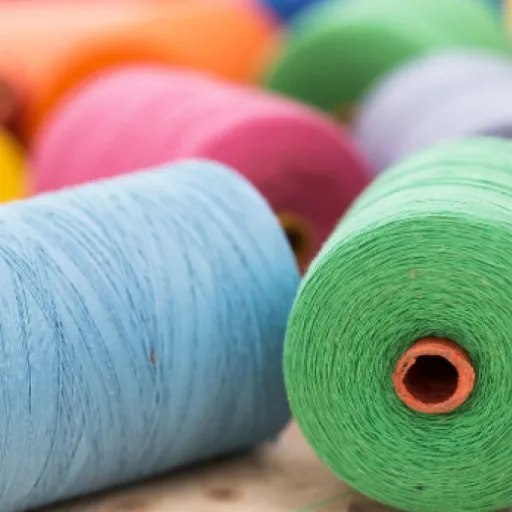Selecting the perfect yarn to suit your project crafts or textiles could be a daunting decision between acrylic and polyester yarn. These fibers are both synthetic with distinctive properties, each attracting crafters and textile-makers for its reasons. Knowing their essential differences will help you make an informed choice, whether knitting, crocheting, or garment-making. This article details the characteristics of acrylic and polyester yarns, compares their pros and cons, and works with you to develop a fine understanding in making decisions for your next project. By the conclusion of the read, you’ll have gained insight and will never hesitate to go with confidence into the right yarn for your project.
Introduction to Acrylic and Polyester Fabrics
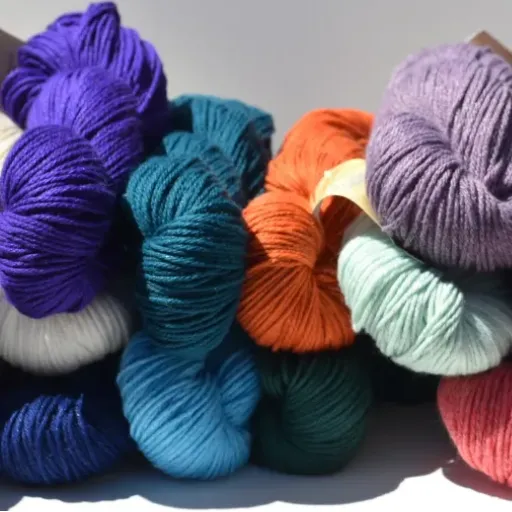
Advantages of Synthetic Fibers
Synthetic fibers are man-made materials developed through chemical processes that contrast with natural fibers by way of copying or even enhancing their characteristics. They are widely used in textile manufacturing due to their ability to adjust, durability, and affordability. Natural fibers come from plants or animals; instead, synthetic fibers are essentially manufactured from petrochemicals and hence highly customizable for various applications.
Acrylic and polyester stand as two major variations, each type having distinct characteristics. Acrylic is considered soft and warm and is therefore marketed as a substitute for wool; it is lightweight, resists wrinkling, and holds dyes well, so that it is ideal for articles of clothing or accessories needing sets of vibrant colors. Polyester is considered strong, resistant to stretching and shrinking, fabric mildew, and undesirable dirt, performs well in fabric rejecting all its application usage.
Both materials have pros and cons depending on what your project requires. Acrylic yarn is great for projects that require comfortable insulating properties; however, it is not breathable and may get pilled with time. Polyester, on the other hand, is less soft but does well in moisture-wicking and durability, thus better for those items that are in frequent use or outdoor conditions. These are a few of the basic differences one might consider when selecting the right fiber for any craft or textile project.
What is Acrylic Yarn?
Acrylic yarn is a synthetic fiber that is made out of polymers mainly from petroleum or natural gas. Being cheap, available, and versatile, it finds its use in any craft or textile project. Acrylic yarn is supposed to behave like wool, i.e., soft and light, yet being cheap.
One of the main advantages is that acrylic yarn is very durable: resistant to abrasion, fading, and stretching, and thus good for any project meant for everyday use, such as blankets, scarves, and sweaters. In addition, acrylic’s machine-washable nature is a real boon when looking after finished items. For an added benefit, acrylic yarn does not attract moths and other pests, unlike natural fibers, such as wool.
However, acrylic yarn does have its limitations. It does not allow for much air circulation compared to natural fibers, possibly rendering it unsuitable for warm-weather attire. With cons like these, the fiber pills with time, especially when exposed to friction on a constant basis. For a myriad of projects, however, acrylic yarn does make a good choice, particularly when melding quality with price.
What Is Polyester Yarn?
Polyester yarn is a synthetic fiber made of a polymer known as polyethylene terephthalate (PET). It is made by polymerizing petroleum-derived chemicals into long, strong fibers from which yarn is spun. This yarn finds wide application in textile manufacturing because of its good tensile strength, resistance to stretching, and cheap price.
Some of the advantages polyester yarn has to offer are longevity; resistance to shrinkage, wrinkling, and fading-all these make it suitable for projects that have to last for a long time, especially in conditions requiring frequent washing or wear and tear. And they dry fast-a good quality feature for outdoor fabrics or clothing. Also, their lightweight nature and smooth texture make them adaptable for many uses-from apparel to home décor.
Yet, its advantages come with some disadvantages. It has limited ability to breathe-a quality that may be unwelcome in warm climates or for activewear where moisture-wicking ability is important. Naturally, it is the question of environmental consciousness, for it is made from non-renewable sources, although more and more popular recycled options of it have come into limelight in solving these issues. In the grand scheme of things, and balancing considerations of the environment, polyester yarn is certainly a highly practical and inexpensive choice for all sorts of use, where its strengths are durability and functional ability.
Key Differences Between Acrylic and Polyester
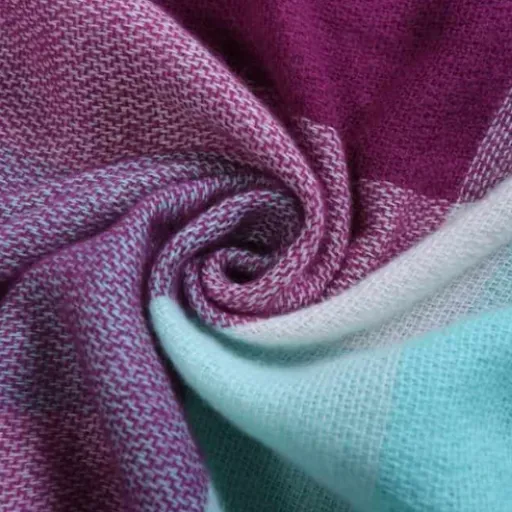
Durability and Wear Resistance
When it comes to durability and abrasion resistance, both offer noteworthy strength, but in slightly different ways. Acrylic fibers resist the sun and weather, making them suitable for outdoor uses like upholstery or awnings. Acrylic, however, will pill over time in high friction areas, which tarnishes the fabric’s aesthetic. It also has less resistance to surface wear when compared to a polyester, meaning it starts wearing off sooner when used for items in frequent use.
The polyester proves to be another powerhouse of durability, resisting wear and tear excellently. Unlike acrylic, polyester does not develop pills even upon extended use, and weather factors do not have much of a say in this either, as it resists fading from daylight and moisture. Polyester being naturally wrinkle resistant certainly adds to this longevity, for instance, when applied to clothing and household textiles.
First and foremost, when longevity and wear in the outdoors are the utmost concerns, the choice would surely be polyester. Acrylic fibers, being a bit weaker under harsh treatment, rank second for items that require softness, warmth, and weather resistance. Both serve well, but the decision must be weighed against the particular use and prevailing conditions.
Care Instructions for Each Fabric
In order to retain the quality and longevity of fabrics such as polyester and acrylic, they must be handled properly and with due care. Below are specific instructions on how to effectively maintain each fabric:
Polyester:
- Washing: Polyester may be washed in a washing machine set for warm water temperature (around 30-40°C or 86-104°F) with a mild detergent. The use of hot water should be avoided as it may melt the fibers or cause shrinkage.
- Drying: Polyester dries fast; hence the drying method must be such that no shrinkage or wrinkling occurs. Use of a drying rack or tumble drying on a low heat setting is the best.
- Ironing: Iron at low to medium heat, with a pressing cloth on the fabric if desired. Avoid ironing at temperatures greater than 300°F (148°C).
- Additional Tips: Polyester builds up static charge, so a fabric softener during the rinse cycle may be beneficial. Do not use chlorine bleach because it will degrade the synthetic fibers.
Acrylic:
- Washing: Acrylic needs gentle handling. It can be hand washed or machine washed on a gentle cycle, using either cold or lukewarm water (under 86°F or 30°C). Using mild detergent is advisable.
- Drying: Lay the fabric flat on a towel, reshaping it while damp to give the fabric its correct form. Hanging it to dry could lead to stretching.
- Ironing: Carefully iron acrylics at a low heat setting (below 275°F or 135°C), placing a damp cloth between the iron and fabric to prevent unwanted scorch marks.
- Additional Tips: Since acrylic is heat sensitive, avoid tumble drying at high temperatures. Steaming serves as a better solution to get the fabric wrinkle-free.
Cost Implications and Value Proposition
When considering the cost implications of acrylic fabric, one must look at the cheapness that it enjoys over natural fibers like wool or cotton. Typically, acrylic, being synthetic, is cheaper to produce due to the lack of a need to depend on agricultural resources. According to the latest market trends, the average cost of acrylic varies somewhere between $5 and $15 per yard, favoring the manufacture or consumer equally.
From the value point of view, acrylic provides a better value for money because of its durability and versatility. Acrylic fabrics are resistant to wrinkling, shrinkage, and fading, which allows them to be applied for apparel, home textiles, or even outdoor gear. With recent improvements in the production of acrylics, this state-of-the-art fabric is now several times stronger and softer than what was once considered the roughest of synthetic cloth.
Besides being low maintenance, such as requiring easy washing and staying free of wrinkles, acrylic gives its consumers long-term cost savings. While the environmental concerns with the acrylic are the synthetic nature of it and that it is non-biodegradable, more recycled acrylic materials have been put on the market that will work well as a sustainable alternative without compromising on the performance or cost-effectiveness. This is where acrylic truly balances between buyers looking to save and those wanting to buy wisely.
Applications of Acrylic and Polyester Yarn

Common Uses of Acrylic Fabric
Acrylic fabric has been heavily used in many industries as a result of its durability, cheap price, and versatility. One of the most common uses in the fashion world is to generate warm, lightweight clothing pieces such as sweaters, scarves, and gloves. Since acrylic is one of those materials that can simulate the wool-like soft feel and appearance of natural fibers, it finds its way in winter clothes while keeping the prices low.
In addition, acrylic is also perpetually being used in the construction of all sorts of furnishings. Upholstery, carpets, and curtains are all commonly made with acrylic fabric since it does not fade and retains bright colors through time. Its moisture workmanship also makes acrylic a feasible option for items found around the house.
This fabric makes an excellent coloring agent for outdoor and industrial stuff. It is used in making umbrellas, awnings, and covers for outdoor furniture as it withstands sunlight and adverse weather conditions, and the weight factor being low adds further to the advantages. With these properties of durability and lightness acrylic fabric remains a material of choice for applications that require both performance and longevity.
Common Uses for Polyester Fabric
Due to its endurance, affordability, and versatility, polyester fabric stands as one of the most versatile materials found in different industries. Here are some of the classical uses for polyester fabric:
- Clothing or apparel: The reason it has established itself well in the fashion industry is its ability to provide very lightweight garments that do not easily fold into wrinkles. Sports companies often attribute it with its moisture-wicking property and thus use it mostly for sportswear. Recent statistics indicate that polyester is dominating the clothing sector by approximately 52% in the global fiber market.
- Home Furnishings: Polyester fabric is used in the making of curtains, bed linens, upholstery, and carpets, among other things. It is preferred for places that usually act as high traffic and general home decor application where stain and fade resistivity stand to win the biggest argument.
- Industrial Applications: Owing to its strength and stretch resistance, polyester finds applications in ropes, conveyor belts, and safety harnesses. Polyester is also one of the main materials used in producing reinforced fabrics for making car tires. The material stands firm even under great strain and stress.
- Packaging Materials: PET (Polyethylene Terephthalate), an alternate name for polyester, basically forms plastic bottles and food packages. It is light in weight and recyclable. It provides absolute protection against contaminants from outside, thus becoming an indispensable aspect of packaging.
- Technical Textiles: Polyester is employed in the production of geotextiles, which are used in various civil engineering projects such as road construction and landscaping. These textiles combine strength with permeability and thereby go a long way toward easing construction processes.
Choosing Between Acrylic and Polyester for Your Project
Choosing either acrylic or polyester for your project is possible only upon reflection on the real needs of your project. Acrylic best suits areas that require good weather resistance and color retention. It also does not fade under UV light, which makes it good for outdoor furniture, signage, or awnings. The fabrics have an almost soft, luxurious feeling to them, making acrylics appealing for many aesthetic uses.
Polyester, on the contrary, has been appreciated for its strong backbone: strong, cheap, and versatile. It resists stretching and shrinking, shrinking from abrasion, an abrasion that could make it the choice in the industries for enduring use. Polyester may be used where materials need to be strong, light, and moisture-resistant, such as in clothing, technical textiles, or industrial applications.
The right option is finally a flexible opportunity very much dependent upon the balance between durability, cost, and aesthetic appeal that your job requires. If your outdoor project demands weather resistance and color fastness, then acrylic would be the go-to choice. Polyester works better in projects that require for strength, flexibility, and cost. Thus, assessing your particular needs will guarantee that the correct material is chosen for your aim.
Environmental Considerations

Acrylic and Polyester Sustainability
The sustainability credentials of acrylic and polyester bring with them a variety of challenges and opportunities. Being petroleum-based, acrylic is non-biodegradable and uses a great deal of energy during production. Further environmental damage is wrought with an additional layer from the microplastics released from acrylic into ecosystems during use and disposal.
While polyester too is petroleum-based, it is sometimes regarded as more sustainable due to the availability of recycled options. Recycled polyester, typically made from plastic bottles, helps in waste reduction and lessens dependence on raw materials. Nevertheless, similar to acrylic, virgin polyester production uses fossil fuels as its main source and creates microplastic pollution during washing and disposal.
Ultimately, neither is really sustainable by itself; the impact can be lessened by certain choices. Recycled or secondary plastics and new alternatives such as biodegradable polymers will definitely reduce the footprints. Also, emphasized recycling alongside proper disposal will drain the eternal environmental damage for both materials.
Production Processes and Their Impact
Traditionally manufactured plastics and synthetic fibers rely on petrochemical raw materials, further stressing a depleting natural resource-and also deemed major carbon emitters. Polymers are manufactured from the refining and chemical treatment of crude oil or natural gas. These processing facilities have an immense energy demand, with immense emissions of greenhouse gases, and quite often with severe by-products polluting the environment. Analogously, the processing of synthetic fibers such as polyester involves chemical reactions that depend on oil-based derivatives and require a lot of energy.
There are environmental challenges posed by production methods beyond just carbon emissions-waters remain polluted possibly while waste is being generated unchecked. To give an example, untreated waters, laced with toxic chemicals from manufacturing units, have been released into local water bodies, severally injuring aquatic ecosystems. With respect to synthetic materials, industrial wastes from their production cycles are glued-in together with environmental worsening since those wastes are hardly biodegraded.
Innovations are posed to safeguard against the identified impacts, including the introduction of closed-loop production systems and bio-based alternatives. Closed-loop systems minimize waste by recycling inputs back into the process and, therefore, require lesser raw materials-generated emissions. Bio-based materials are alternative, renewable materials which are-options-undergoing investigation, with paramount consideration to their scale limitations and efficiencies. In so doing, we augment the production processes, thereby mitigating, as much as possible, the environmental load emanating from conventional materials.
Recyclability of Acrylic and Polyester Fabrics
Both acrylic and polyester fabrics can be recycled, but the recycle processes and problems differ with each material. Polyester, generally speaking, has a wider recycle spectrum than acrylic. Polyester fabrics, when formed out of PET plastics, can be mechanically or chemically recycled. Mechanical recycling consists of shredding and remelting; chemical processes break down the plastic polyester into original monomers to synthesize new polyester of the same quality as virgin thereof.
Acrylic fabrics have a more pronounced issue with recyclability due to the nature of their chemical structure. Acrylic is usually blended with other fibers, which need to be separated to identify processing routes; this is the first hurdle to recycling for acrylics. Establishing more recycling systems for acrylic would improve its chances for being recycled on an industrial scale. In any case, these fabrics usually get downcycled in lesser grades of products or incinerated for energy recovery-an approach which is much less sustainable.
Research on textile recycling technologies is underway to better the recyclability of both materials. Closed-loop recycling and new technologies are critical to overcoming limitations of both fabrics. Demand for better recycling solutions can be fostered by consumers buying recycled-content products and supporting companies that follow sustainable practices.
Conclusion: Making the Best Choice
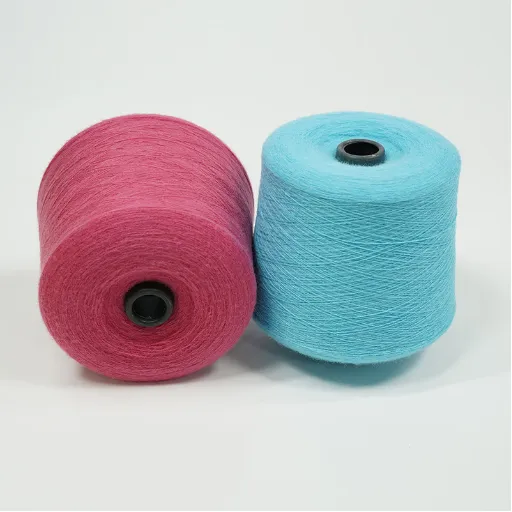
Summarizing Key Differences
The two differ quite a lot in how they are made, their utility, and recyclability. Cotton is a natural fiber and tends to biodegrade and is comfortable when worn, but it needs huge quantities of water, pesticides, and land while being grown. Polyester, conversely, is a synthetic fiber obtained from petroleum, making it less resource-intensive in the manufacture. And yet, its dependence on fossil fuels and very little degree of biodegradability make for its other long-term environmental antagonisms.
Both are unlucky when it comes to recycling. Cotton fibers lose quality after recycling and thus are limited in their uses for new products. Polyester is more energy-consuming to recycle, and recycled polyester poses microfiber pollution again. These days, closed-loop recycling coupled with innovations in textile technologies might one day make the two more recyclable.
The distinction would be made between cotton and polyester mainly on the basis of the purpose and which sustainability factor receives more weighting. Cotton would be favored for natural and biodegradable products, but it is essential to ensure that the cotton has been grown sustainably. Polyester accommodates durability and performance considerations, being best selected in its recycled form to lessen damage to the environment. Conscious decisions and promotion of sustainable activity are the keys to a greener textile industry.
Factors to Consider When Choosing
Sustainability is, indeed, a huge factor in choosing between cotton and polyester or other textiles. With regard to cotton, it is essential to check if it has been produced in a sustainable manner. Organic cotton, or cotton grown with less water and pesticide intervention, is a great environmentally conscious choice. Look for certifications that ensure fair labor practices and responsible farming methods that corroborate the source of the material.
However, the environmental performance of polyester depends largely on whether virgin or recycled is produced. With recycled polyester, one saves large quantities of resources and emissions of greenhouse gases that would otherwise be released from virgin polyester. Since polyester is a synthetic and non-biodegradable material, using the recycled variety would certainly minimize not only waste but also the burden on natural ecosystems.
Finally, check the end-use requirements for the fiber in question. Cotton, being soft, breathable, and biodegradable, is best for products respecting any such quality; thus, polyester must excel in those tough applications where durability, moisture resistance, and performance come into play. Having these practical aspects on the table will make environmental considerations a responsible choice among equals.
Final Thoughts on Acrylic vs Polyester
Perhaps, in certain instances, the optimal selection would heavily depend on the usage parameter in question and the environment. Acrylic will produce warmth, softness, and insulation and thus would be best for making sweaters, blankets, and other forms of cold-air-wearing accessories. Of the other two, it is less durable and tends to pill after some years of use, so the wearer will not cherish it for long. These aspects make for a lesser kind of product. Also, the production of acrylic requires immense amounts of energy, favoring the use of scarce resources, thus negating its claim to eco-friendliness.
Polyesters are truly cherished by many as they offer durability, flexibility, and resistance to stretching and shrinking. Therefore, they are used in outdoor equipment, activewear, and upholstery applications that call for a high level of performance. They also perform better in wicking moisture away when compared to acrylic. Yet, along with acrylic, polyester is a petrochemical product, and that, of course, casts shadows on its environment friendliness. Although polyester is recyclable, owing to poor recycling infrastructure in most places, it hardly stands out among sustainable options.
Ultimately, if sustainability is held as the most important issue, a natural or recycled alternative fiber should be explored. Otherwise, in matters of performance and durability, polyester is bankable, where acrylic is the softer option: it is all about careful judgment of both the selected material and the use for it with regard to the wise choice.
Frequently Asked Questions (FAQ)
Q: What are the key distinctions between acrylic and polyester?
A: Both acrylic and polyester are examples of synthetic fabrics, yet they bear several differences in their attributes. Acrylic is generally softer and comfortably embracing; polyester, on the other hand, emphasizes longevity by staying wrinkle-free. When looking at the dilemma of acrylic versus polyester, considerations should include softness and warmth for comfort versus durability for hard wear.
Q: Which is best for blankets: acrylic or polyester?
A: It depends on the requirements you might have when choosing an acrylic blanket or polyester one. Acrylic blankets will be softer and warmer and perfect for occasions requiring comfort. On the other hand, polyester blankets will endure the roughest of days and offer the least wear.
Q: How soft is acrylic compared to polyester?
A: Acrylic tends to be softer than polyester and so, depending on the soft feel required, a person may want to use acrylic for items like blankets and sweaters. The acrylic softness might help with comfort in terms of chill, whereas slightly rugged polyester has certain advantages like durability.
Q: Can acrylic be used for summer clothes?
A: Yes, acrylic can be used for summer clothes, though it may not be as breathable as some natural materials like cotton. It is therefore somewhat lightweight and fairly warm, and so it would serve well of a light jacket or a sweater for chilly summer nights. But if breathability is what you want, go for natural fabrics or blends.
Q: What are the benefits of acrylic over polyester?
A: So, acrylic has the benefits of being soft to wear, warm, and good at holding vibrant colors. That said, they’re comfortable to wear on the skin, while polyester would give you a fabric that would outlast, resist shrinking, and move away from color fading better. Depending on your preference, you might choose one over the other.
Q: Why is it so commonly used in sportswear?
A: Because polyester is synthetic and exhibits all the characteristics of a good sportswear- it wicks moisture, it is strong, it doesn’t stretch or shrink with use. Athletic apparel, which needs to be somewhat flexible and able to endure some rather rigorous activity, benefits from this type of fabric.
Q: Is there any health concern associated with acrylic fabrics?
A: It may cause an allergic reaction in some people, especially those allergic to synthetic fibers. It’s wise to watch your skin reaction to acrylic clothing. On the other hand, polyester is generally harmless though it may become quite irritating if worn for long hours.
Q: How should I go about choosing the best fabric for my needs?
A: Factors related to warmth, softness, and durability are to be weighed when choosing the right fabric for a given use. For instance, if softness and comfort are key, acrylic should be considered; if a fabric has to resist wear and tear throughout its use, polyester will generally be preferred.
Q: What kind of merchandise is mostly manufactured using acrylic and polyester?
A: Let’s look at acrylic and poly umbrellas in the following domains: sweaters, blankets, and gym wear. Acrylic yarn is favored for knitting and crafting because it offers bright colors and is very soft, while polyester is suitable for more structured garments and outdoor equipment, as it provides durability.
Q: How do acrylic and polyester stand in care and maintenance?
A: Acrylic is, generally, easy to maintain and is a good option to consider if a clothing item is machine washable and does not need ironing. Polyester is low-maintenance, dries fast, and resists color fading as well. Both fabrics could be used in daily wear, but it is good practice to check the care instructions on the label.
References
-
Big Z Fabric Blog: Two Common Synthetic Fibers – Polyester vs Acrylic – Explains the differences in softness, durability, and breathability between the two materials.
-
Woollen Wear: What Material is Better to Wear – Acrylic or Polyester? – Focuses on the advantages of each material, particularly for cold-weather wear.
-
Thai Polyester Blog: Difference Between Polyester Yarn and Other Synthetic Yarns – Highlights the texture, bulkiness, and air permeability of acrylic and polyester yarns.








